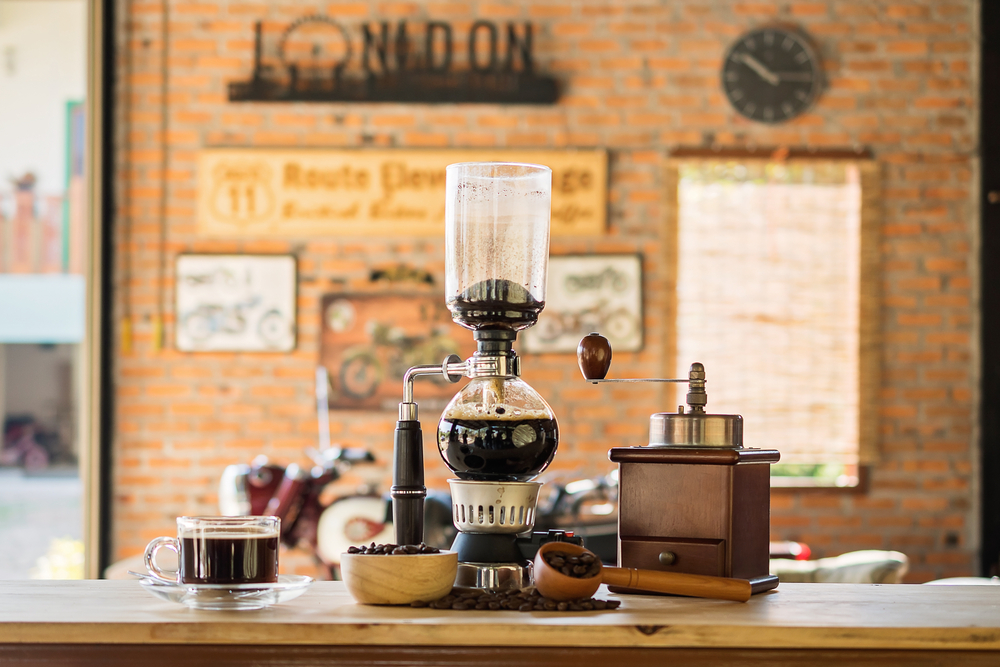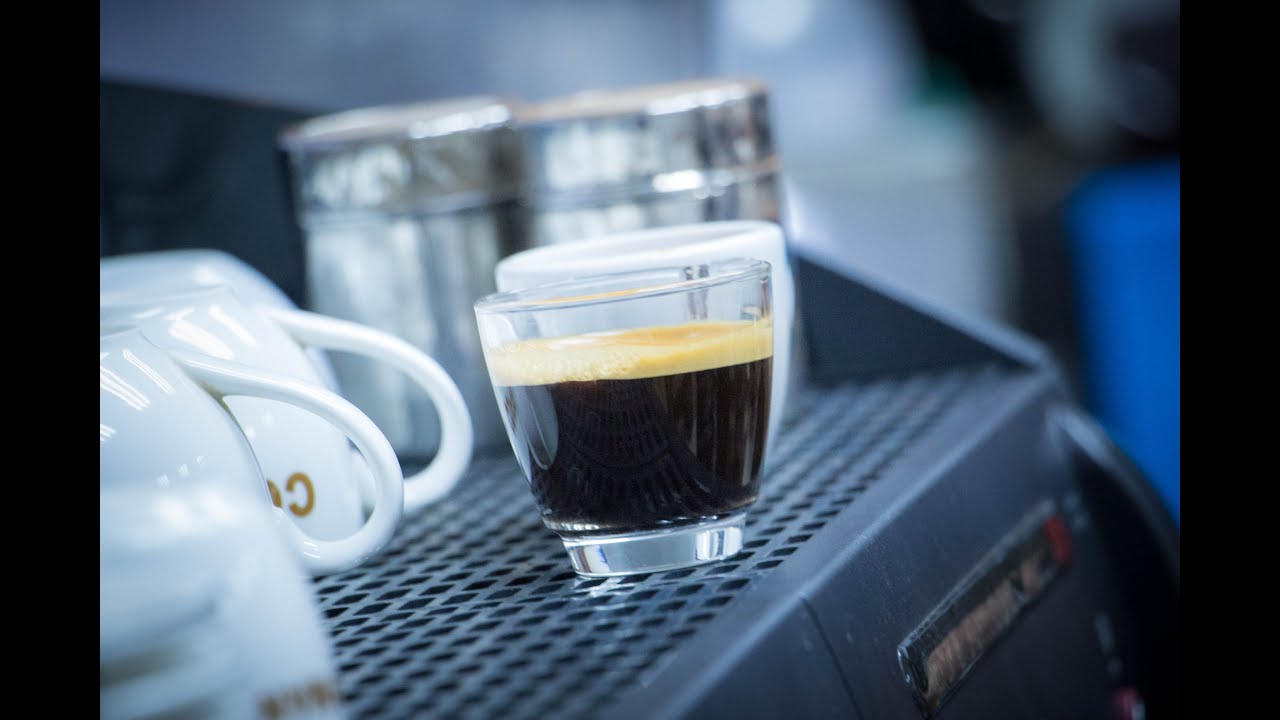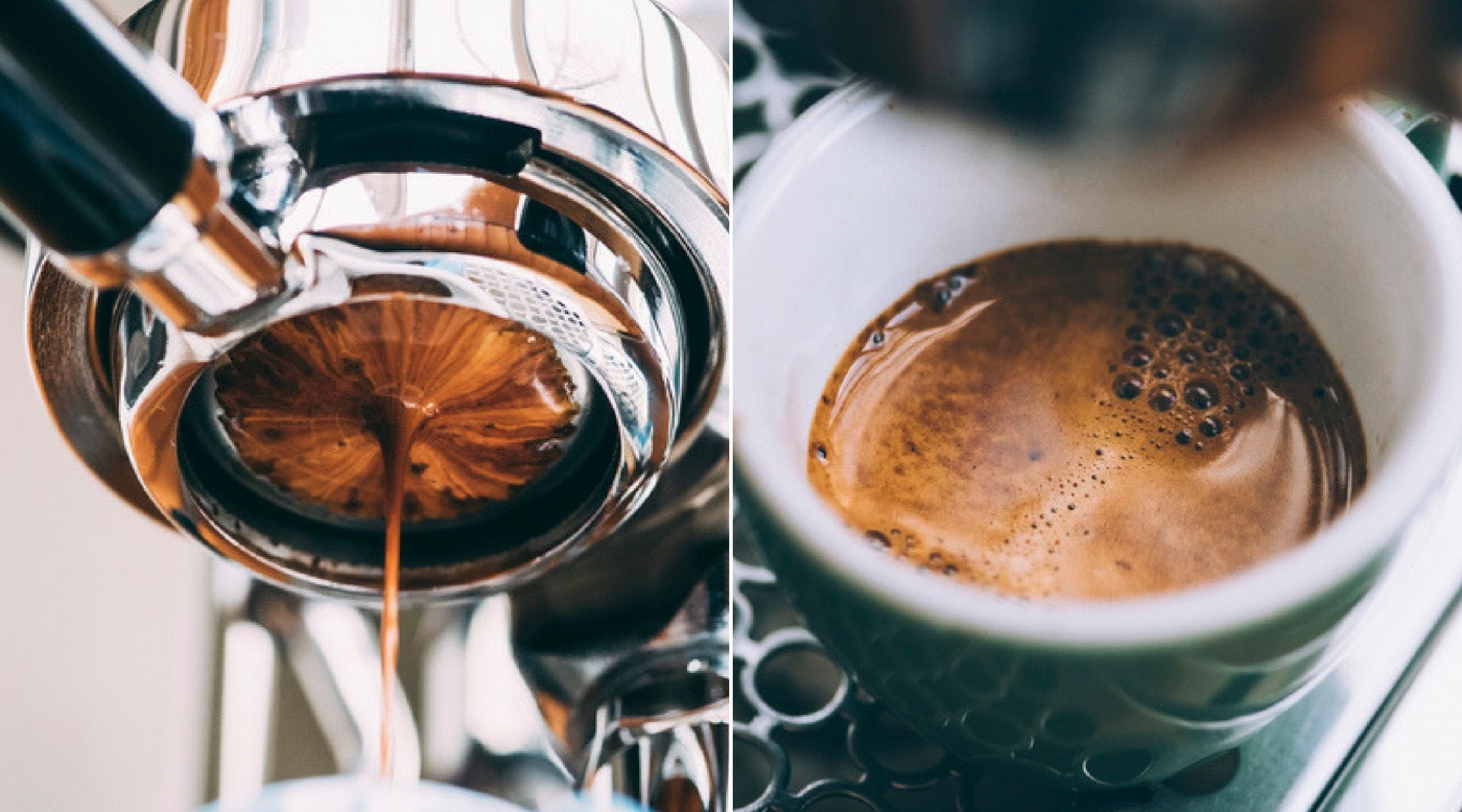To make coffee with good aroma and quality, you need to master the "six major extraction reasons for coffee"!
Professional coffee knowledge exchange more coffee bean information please follow the coffee workshop (Wechat official account cafe_style)
Whether in the morning or in the afternoon, more and more office workers have a cup of coffee, but do you gradually ignore the quality of coffee in your busy schedule?
We often talk about the quality of coffee beans or the professionalism of the machine. However, in fact, from raw beans, roasting to extraction, "to achieve the best balance of the extraction process" is an important key to making a good cup of coffee, in which "water" is the core of everything. Let's take a look at what Yu Xizhi, the judge of the South Korean World Coffee Competition, said, "the six major reasons for the extraction of coffee."

The process of extracting delicious coffee is like an endless journey. Neither can ignore any one factor, nor will it be able to play the best flavor because of special emphasis on a certain factor. Only through constant preparation and effort, try to achieve a balance, can produce high-quality coffee.
Water has a great influence on the extraction process.
Of course, in order to drink high-quality coffee, it is necessary to improve the cultivation and harvesting process of raw beans, select the right machine to carry out the roasting process with the corresponding technology. Finally, it is the extraction process that strikes the best balance between ground coffee and extract concentration that is the real key. Here, rather than background on the green beans → baking → extraction process, I would like to focus on water, which has a great influence on the extraction process.
Coffee extract is composed of 80% water-soluble components in water and other aroma components. When these ingredients are aggregated, they can enhance the sensory characteristics of coffee such as aroma and taste.
The aroma of coffee will not only change due to different blending and roasting conditions, but also change if the water and proportion used are different. In other words, water can easily sift out good aroma components. Aroma components do contribute significantly to arousal of flavor when compared to whole extracts, although they are very small and difficult to measure. Although water-soluble ingredients that affect taste and water-insoluble ingredients that affect body are easy to disappear, ingredients related to aroma and taste contain different chemical components, so they are extracted with time. In general, the strongest aroma components are extracted early on. As coffee particles are exposed to water for longer periods of time, bitter, poorly flavored substances are gradually released. In other words, prolonged extraction time will reduce the quality of coffee aroma, and this result is caused by water. Therefore, in order to obtain the best results, it is necessary to control the extraction process.
Coffee extraction six essential factors
In order to extract coffee with good aroma quality, you need to master six key factors.
(1) The correct water-powder ratio
In order to extract complete coffee, the balance between strength (concentration of solute) and extraction (yield of dissolution) is important. Because once the balance is changed, it will have a significant impact on the final product. The maximum allowable concentration range is 1.0~1.5% coffee powder and 99.0~98.5% water. Coffee less than 1% is too weak; coffee more than 1.5% is too strong. In addition, the maximum acceptable extraction rate is 18~22%, below 16% is insufficient extraction, will produce peanut or grass flavor. On the other hand, if the extraction is too much, it is more than 24% of the cases, which will produce a slight bitter taste or astringency. Refer to the brewing formula published by the Specialty Coffee Association of America (SCAA), it is important to choose the appropriate ratio of coffee powder to water, and adjust the concentration and extraction rate.
(2) Grinding degree corresponding to extraction time
After deciding which proportion to extract with reference to the brewing formula, the next thing to think about is grinding coffee particles that match the extraction time. In order to avoid under-extraction or over-extraction of aroma components, it is necessary to select the appropriate extraction method and grinding degree of the tool. Generally speaking, the longer the extraction time, the more suitable for coarse grinding; the shorter the time, the finer grinding will be selected.
(3) Correct use of extraction equipment
① Contact time between coffee particles and water
Extraction can be said to be the process of extracting water-soluble components from coffee particles when coffee particles are absorbed by water. Even if the water ratio is changed, chemical components will continue to be extracted from the coffee particles, and dissolved components will continue to mix and change. Therefore, controlling the extraction time results in optimum extraction and more uniform results.
② Water temperature
Cold water cannot extract coffee flavor as quickly and completely as hot water. When the water temperature is 92~96℃, the aroma components will be released more quickly and freely, so that other water-soluble components can be extracted more effectively in a reasonable time. Therefore, the temperature must remain constant during the cycle of brewing.
③ Agitation
As the water passes through the coffee particles, mixing occurs, a phenomenon known as turbulence. Agitation causes the coffee particles to be thoroughly wetted at the outset and allows water to flow evenly through the crevices. So-called wetting allows water to flow between particles, the more evenly it flows, the easier it is for water-soluble ingredients to separate from the beverage. In addition, moderate agitation facilitates immediate contact between the water and coffee, which means that more aroma and dissolved substances can be extracted if the coffee powder is soaked at the beginning.
(4) Six ideal extraction methods
Even if the same coffee bean is selected, the final coffee flavor will vary depending on the type of extraction appliance. The design of the extraction apparatus is also made according to different extraction principles.
Stepping (steeping)
It refers to the method of pouring coffee powder into a container and mixing it fully with hot water, then standing for a period of time before extracting. Depending on the degree of grinding and water temperature, it will affect the degree of contact between the two. Also due to the stirring of coffee powder, coffee powder separation speed, and extract different finished products.
2. decoction
It refers to the method of boiling coffee powder and water mixed in a container. After the temperature rises to about 100℃, it will be difficult to continue extraction due to high temperature, and the water will start to boil, which may cause serious turbulence *.
Percolation (filtration)
The container containing ground coffee powder (brewing chamber) is heated directly and the hot water is recycled by steam pressure to extract the coffee. When heated, the water boils up, passes through the powder trough filled with coffee powder, and then flows out through the pipe, and the cycle is repeated. At this time, the degree of grinding, water temperature and circulation speed will be different due to different contact time.
④ trickle filtration (drip filtration)
It refers to a simple way to pour coffee powder into a filter and fill it with hot water, and then use a glass pot or coffee thermos to filter out the extract. It is one of the more common methods that have been improved recently, including hand drip (or pour over) and so on. The concept of dripping is extremely complex, and there are many different dripping methods, and there are many related books, so I hope you can choose the appropriate tools according to the flavor of coffee you want.
Hand flushing also has a variety of extraction instruments, so it will be extracted in different ways. The extraction principle is carried out by drip filtration, so the contact time caused by different flow rates is a very important factor. at the same time, like other extraction utensils, coffee flavor will be changed due to different water temperature, filter cup and filter paper.
⑤ vacuum Filtration (Vacuum filtration)
The most representative is the siphon pot. Is the use of upper and lower two glass pots and fusion immersion (Steeping) extraction. Affected by the steam pressure, the hot water will pass through the coffee powder from the bottom of the glass, then filter by the pressure difference between the upper and lower pots, and then extract the coffee. The water in the lower pot is converted into steam when heated, which will affect the number of times coffee and water are soaked and bring more variables due to the different degree of steam release. Different vacuum methods will affect the contact speed, and different filters and grinding degrees will also change the flavor of coffee.
⑥ pressurized infiltration (Pressurized infusion)
The representative drink that promotes the popularization of coffee is espresso, which is widely loved by many people because it allows us to drink extracted coffee more quickly, and on this basis, the coffee culture we know well extends to daily life, and has created countless coffee industry creators. Espresso is a method of pressure extraction of ground coffee powder with high temperature and high pressure water. The concentration will be higher than that of dripping coffee, and there are more aroma components, emulsified oils and dissolved solids. In order to fully reproduce the flavor of coffee, fast and stable extraction time and fine grinding particles are necessary, and the extraction temperature and the amount of ground coffee powder are also one of the factors.
These are the extraction methods of coffee, in which boiling and percolation may lead to excessive extraction, resulting in a bad taste, so it is rarely used.
(5) good water quality
That's why I wrote this book. I want to write about the effect of water quality on the flavor of coffee. When preparing coffee, water is as important as coffee. In fact, the proportion of water in the coffee extract is 98%. Water with a small amount of minerals helps to produce the best flavor of the drink. Generally speaking, water containing 50~100ppm minerals can make the beverage with the best taste. This kind of water tastes fresh, has no peculiar smell, will not have sundries visible to the naked eye, and is very suitable for drinking water.
It is not said that a good coffee can be made by using a certain proportion of soft or hard water, but it is worth referring to that water is a factor that must be managed before coffee is extracted. The method of filtering water will be explained in more detail later, and what we need to know now is:
In the process of using sodium ions to study water, it was found that water containing a large amount of bicarbonate (bicarbonate, chemical formula HCO3-) was not suitable for coffee extraction. The above methods will increase the alkalinity and have an effect on the flavor of coffee. It will also increase the possibility of over-extraction due to different treatment methods and longer contact time between coffee and water, resulting in a bad taste.
At PART2, we will explain the importance of water one by one, so that you can take a closer look at the world of coffee flavor and water.
(6) appropriate filter material
Filters span various fields, and many kinds can be found on the market. Choose different filters according to the function of the machine, the positioning of the coffee shop and the taste you pursue. Like a popular filter, it is only popular for a while; there are also filters with professional functions that can be used for a long time and even represent the image of a coffee shop. As the filtering method will directly and indirectly affect the mellow feeling and flavor of coffee, the role of coffee will be different according to the filter used, so it is regarded as an important factor. Although there are many kinds of filter materials on the market, they can be roughly divided into three categories. Other relevant variables in the extraction and the advantages and disadvantages of each filter and other details are skipped here, mainly with the general content.
① metal filter, filter cup (perforated metal plate)
There are various specifications for the size and number of holes in the metal plate, so the degree of grinding must be considered before use. This tool basically has nothing to do with filtering drinks, only very fine particles can pass through.
② filter cloth (cloth)
It is a filter that helps to extract excellent flavor, taking flannel and velvet as an example. Before using the filter cloth, it must be boiled in hot water and well managed before it can be used for a long time. Oil infiltration into the filter cloth is easy to produce spoiled flavor, and the flavor of the beverage will be changed when it is cooked. Therefore, we should pay attention to the storage temperature (after use, put it in a container filled with cold water or put it in the freezer), and choose the container carefully.
③ filter Paper (paper)
Although it is considered to be the best filter to extract the refreshing taste, it is somewhat difficult to establish an ideal coffee extraction environment with filter paper. in addition, if the filter paper is blocked, it is likely to change the flow of water and lead to over-extraction. However, in addition to extracting the refreshing taste, it is still loved by many coffee shops because of its convenient use and convenient preservation and management.
Basically, the quality of coffee depends on the ability of the brewer. Although "people" is the biggest variable. "this sentence seems to be true, but it can be said that the most important process is to choose what kind of coffee beans and appropriate utensils to mix out the flavor you are looking for. Of course, instead of choosing the world-class coffee beans to brew, it is better to first imagine the process from coffee beans to brewing into a cup of coffee, recall all the processes and six major factors of the extraction process, and then adjust to brew the coffee, this way is closer to getting the ideal coffee.
Source: "Water Science of Coffee: extraction principle, Water quality Detection and Parameter Adjustment, fully revealing the mystery of coffee flavor"
END
Important Notice :
前街咖啡 FrontStreet Coffee has moved to new addredd:
FrontStreet Coffee Address: 315,Donghua East Road,GuangZhou
Tel:020 38364473
- Prev

What is the mediocre American black coffee Americano-do you really know it?
Professional coffee knowledge exchange more information about coffee beans Please follow the coffee workshop (Wechat official account cafe_style) compared with lattes, American coffee (Americano,LongBlackLungo) appears to be somewhat thankless. A cup of espresso Espresso heats water in a variety of ways. There are also many factors to consider, but there is no visual sense like the latte.
- Next

How to judge the extraction quality of Espresso espresso?
Professional coffee knowledge exchange more coffee bean information please follow the coffee workshop (Wechat official account cafe_style) A cup of perfect Espresso is really hard to come by. Making a good Espresso (espresso) is one of the most challenging tasks for both coffee lovers at home and a senior Barista in a cafe.
Related
- Beginners will see the "Coffee pull flower" guide!
- What is the difference between ice blog purified milk and ordinary milk coffee?
- Why is the Philippines the largest producer of crops in Liberia?
- For coffee extraction, should the fine powder be retained?
- How does extracted espresso fill pressed powder? How much strength does it take to press the powder?
- How to make jasmine cold extract coffee? Is the jasmine + latte good?
- Will this little toy really make the coffee taste better? How does Lily Drip affect coffee extraction?
- Will the action of slapping the filter cup also affect coffee extraction?
- What's the difference between powder-to-water ratio and powder-to-liquid ratio?
- What is the Ethiopian local species? What does it have to do with Heirloom native species?

